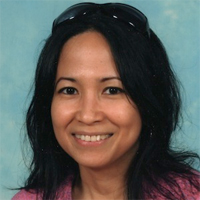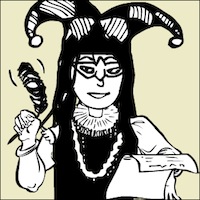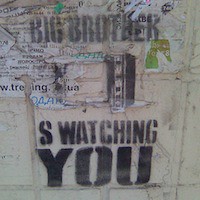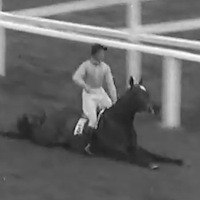The Rose-Mar Killings

November 13, 1966 started as any other Saturday did in Mesa, Arizona. Three beauty school students were getting ready for their busy day and one young mother with her two daughters sat, waiting for her appointment.
The 18-year old Robert Benjamin Smith entered the salon with one thought on his brain: murder. He was not a remarkable person in and of himself. He was of average intelligence and below average athletic prowess; his personality was rather one-dimensional and bland and he lacked any sort of sense of humor. Yet, why would such a person desire to kill innocent people? Fame.
Robert’s father was a Major in the air Force Reserves. As a result, the family moved around a lot as he was growing up. He was teased in school for his lack of coordination—something he would never grow out of, fully. He grew up reading books about his heroes—Caesar, Napoleon, and John F. Kennedy. Of the three, Kennedy was his favorite. That’s why on November 22, 1963, Smith’s world nearly ended. Living in Baltimore at the time, Smith begged his father to let him attend President Kennedy’s funeral. His father declined and Smith seemed to accept the answer, understanding.
Robert Smith turned more antisocial, divesting a lot of attention and involvement in books—about Brutus, Jesse James, John Wilkes Booth, and Lee Harvey Oswald. His interests turned toward books about crime and mass murders, serial killers, and murders. His world grew darker, but no one seemed to take notice.
The family moved to Mesa, Arizona in 1965. Smith’s father had retired from the Air Force and was working at an electronics plant in Phoenix. Smith still kept to himself at school, but despite his awkwardness and antisocial behaviors, his classmates still respected his intelligence enough to elect him to student council.
The summer of 1966 saw horrendous murders. In July, Richard Speck murdered eight nurses in one night in Chicago; and in August, Charles Witman climbed a clock tower and murdered 19 people. These events most likely spurred Smith forward. He began plotting his crime over the next three months. He wanted to be famous. He wanted people to know who he was.
He wanted to kill 40 people. That’s why he selected the Rose-Mar College of Beauty in Mesa. It was always filled with women on Saturday mornings trying to look pretty for date night. This particular Saturday, however, he was disappointed to only find 6 people in shoppe. Still, when none of the women noticed him, he fired a single shot from his .22 caliber pistol in to the air. He ordered them into the back room and told them to lie face down on the floor in a wheel—like spokes.
When one of the girls started praying, he demanded to know what she was doing. When asked if he minded her praying, he said “Yeah, I do,” and shot her in the back of the head. Sadly, he was a lousy shot. He ended up having to shoot her three times before she died. He shot and killed five females—Joyce Sellers (27), Debbie Sellers (3), Glenda Carter (18), Mary Olsen (18), and Carol Farmer (19). Another beautician, Bonita Sue Harris, was shot twice, but pretended to be dead until the police showed up to arrest Smith. The only other person to survive the attack was 3-month old Tamara Sellers; Joyce shielded the baby with her body.
When the police arrived, Smith did not put up any resistance. He laughed and said that he had killed five women in the back room and then pointed to the brown paper sack that contained his pistol and ammunition. When questioned as to why he committed the act, he simply said, “I wanted to make a name for myself.”
On October 24, 1967, Smith was convicted of first degree murder and sentenced to death. However, he was granted a new trial as a judge deemed some testimony from his original trial unreliable. At his retrial, he was again found guilty, but the US Supreme Court had declared a moratorium on the death penalty by that point. He was sentenced to two 99-year sentences and four life sentences for the murders.
Reference Source:
Mass Murders, Time-Life Books.
Beauty Salon Masacre.
The 18-year old Robert Benjamin Smith entered the salon with one thought on his brain: murder. He was not a remarkable person in and of himself. He was of average intelligence and below average athletic prowess; his personality was rather one-dimensional and bland and he lacked any sort of sense of humor. Yet, why would such a person desire to kill innocent people? Fame.
Robert’s father was a Major in the air Force Reserves. As a result, the family moved around a lot as he was growing up. He was teased in school for his lack of coordination—something he would never grow out of, fully. He grew up reading books about his heroes—Caesar, Napoleon, and John F. Kennedy. Of the three, Kennedy was his favorite. That’s why on November 22, 1963, Smith’s world nearly ended. Living in Baltimore at the time, Smith begged his father to let him attend President Kennedy’s funeral. His father declined and Smith seemed to accept the answer, understanding.
Robert Smith turned more antisocial, divesting a lot of attention and involvement in books—about Brutus, Jesse James, John Wilkes Booth, and Lee Harvey Oswald. His interests turned toward books about crime and mass murders, serial killers, and murders. His world grew darker, but no one seemed to take notice.
The family moved to Mesa, Arizona in 1965. Smith’s father had retired from the Air Force and was working at an electronics plant in Phoenix. Smith still kept to himself at school, but despite his awkwardness and antisocial behaviors, his classmates still respected his intelligence enough to elect him to student council.
The summer of 1966 saw horrendous murders. In July, Richard Speck murdered eight nurses in one night in Chicago; and in August, Charles Witman climbed a clock tower and murdered 19 people. These events most likely spurred Smith forward. He began plotting his crime over the next three months. He wanted to be famous. He wanted people to know who he was.
He wanted to kill 40 people. That’s why he selected the Rose-Mar College of Beauty in Mesa. It was always filled with women on Saturday mornings trying to look pretty for date night. This particular Saturday, however, he was disappointed to only find 6 people in shoppe. Still, when none of the women noticed him, he fired a single shot from his .22 caliber pistol in to the air. He ordered them into the back room and told them to lie face down on the floor in a wheel—like spokes.
When one of the girls started praying, he demanded to know what she was doing. When asked if he minded her praying, he said “Yeah, I do,” and shot her in the back of the head. Sadly, he was a lousy shot. He ended up having to shoot her three times before she died. He shot and killed five females—Joyce Sellers (27), Debbie Sellers (3), Glenda Carter (18), Mary Olsen (18), and Carol Farmer (19). Another beautician, Bonita Sue Harris, was shot twice, but pretended to be dead until the police showed up to arrest Smith. The only other person to survive the attack was 3-month old Tamara Sellers; Joyce shielded the baby with her body.
When the police arrived, Smith did not put up any resistance. He laughed and said that he had killed five women in the back room and then pointed to the brown paper sack that contained his pistol and ammunition. When questioned as to why he committed the act, he simply said, “I wanted to make a name for myself.”
On October 24, 1967, Smith was convicted of first degree murder and sentenced to death. However, he was granted a new trial as a judge deemed some testimony from his original trial unreliable. At his retrial, he was again found guilty, but the US Supreme Court had declared a moratorium on the death penalty by that point. He was sentenced to two 99-year sentences and four life sentences for the murders.
Reference Source:
Mass Murders, Time-Life Books.
Beauty Salon Masacre.
You Should Also Read:
Election History (November 4)
Black Sox Scandal (October 9, 1919)
A Woman Named Girly

Related Articles
Editor's Picks Articles
Top Ten Articles
Previous Features
Site Map
Content copyright © 2023 by Christa Mackey. All rights reserved.
This content was written by Christa Mackey. If you wish to use this content in any manner, you need written permission. Contact Lane Graciano for details.







